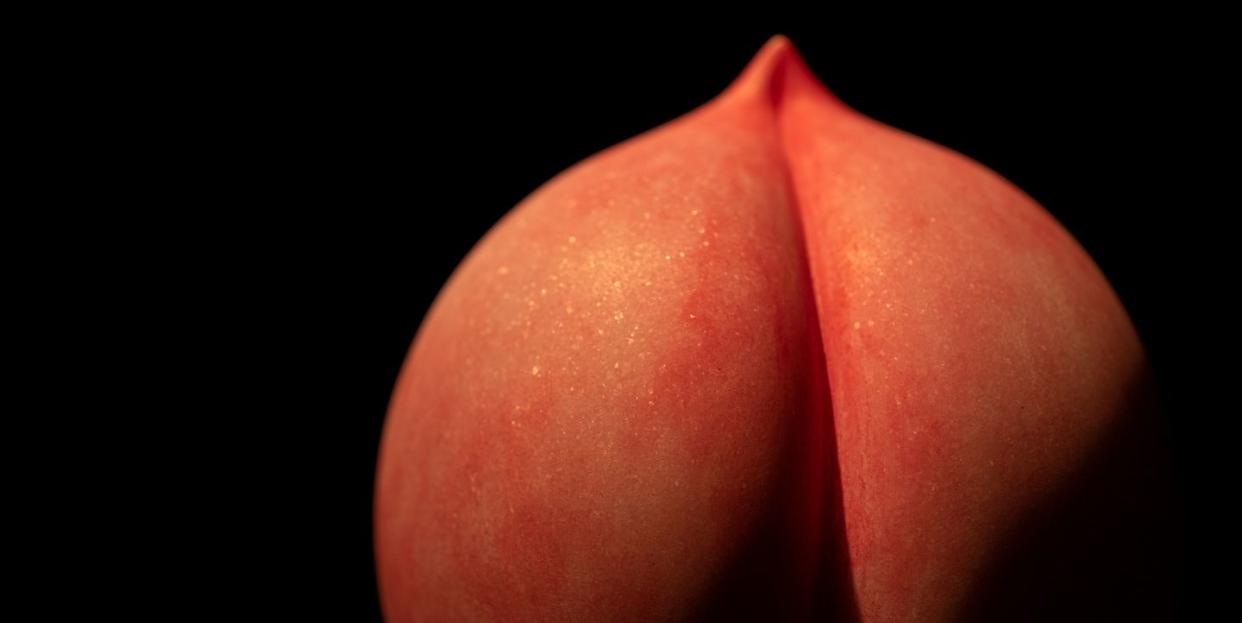The 5 Most Common Causes of Butt Rash, and What to Do Next

No one wants to deal with butt rash, but it happens. Itchy, red bumps can seemingly pop up out of nowhere, leaving you to try to find a way to discretely scratch your bum throughout the day.
Of course, once you get over the shock and horror of having a rash on your butt, it’s only natural to think about how you managed to develop a butt rash in the first place and, of course, what to do next. Here’s what could be behind your skin condition—and what to do about it.
How common is butt rash?
While there are no hard and fast numbers on this one, dermatologists say they deal with butt rash often. “It’s very common. We see it all the time,” says board-certified dermatologist Ife J. Rodney, M.D., founding director of Eternal Dermatology Aesthetics and professor of dermatology at Howard University and George Washington University.
“The rear end is a common location for skin rashes, because of frequent sweating, and friction of the skin caused by clothing,” says Joshua Zeichner, M.D., director of cosmetic and clinical research in the department of dermatology at The Mount Sinai Hospital.
Common causes of butt rash
There are a lot of potential causes of butt rash, but dermatologists say these are the most common ones they see.
Folliculitis
Dr. Zeicher says he sees this pretty often. Folliculitis, in case you’re not familiar with it, is a skin condition that happens in the hair follicles, per the American Academy of Dermatology (AAD). Folliculitis usually looks like a sudden acne breakout and each spot may have a red ring around it, the AAD says. “It’s often referred to as butt acne,” Dr. Zeichner says.
A common cause of folliculitis is Staph aureus, which is found on your skin, the AAD says, but you can also get folliculitis on your butt when the following things happen:
You touch or rub your skin often
You wear tight clothes
You have skin friction
You shave the area
Worth noting, per the AAD: You’re more likely to get folliculitis when your skin is damp and hot (like when you wear tight, sweaty clothes for longer periods of time after a workout).
Eczema
Eczema, aka atopic dermatitis, is a condition that causes dry, itchy, and inflamed skin, according to the Mayo Clinic. “Eczema is a condition where the skin barrier is not working as well as it should be, leading to microscopic cracks and loss of hydration,” Dr. Zeichner says. “This translates to red, scaly, itchy patches of skin.”
It’s unlikely that you’d just have eczema on your butt, Dr. Rodney says. But if you have eczema on other parts of your body, she says it’s fair to have a healthy suspicion that your butt rash could actually be from eczema.
Using a skin cleanser that’s free of dyes, alcohols, and fragrance can help, the Mayo Clinic says, along with moisturizing the area at least twice a day.
Heat rash
Heat rash happens when sweat is trapped in the skin, creating anything from small blisters to deep, inflamed lumps, the Mayo Clinic says. “You can get heat rash any time of year,” Dr. Rodney says. “Even in the winter months, your butt will have layers of clothing on it and that can lead to increased heat and sweating in the area.”
Heat rash tends to go away pretty quickly once you cool off, but the Mayo Clinic suggests taking a cool shower or bath and letting your skin air dry, and avoiding using oily or greasy moisturizers on the area to avoid blocking your pores even more.
Psoriasis
Psoriasis is a condition that causes patches of thick, red skin and silvery scales to develop, according to the Centers for Disease Control and Prevention (CDC). While it’s usually found on the elbows, knees, scalp, lower back, face, palms, and soles of feet, it’s possible to get psoriasis on your butt, Dr. Rodney says.
Psoriasis usually looks like patches of thickened, dry skin, the AAD says. And, like eczema, it’s unlikely that you would just have psoriasis on your butt, Dr. Rodney says. Treatment for psoriasis can be complicated, so it’s best to check in with your doctor if you suspect it’s behind your butt rash.
Genital herpes
Genital herpes is an STD caused by two types of viruses—herpes simplex virus type 1 (HSV-1) and herpes simplex virus type 2 (HSV-2), the CDC says. It’s usually spread through intimate contact, Dr. Zeichner says. Genital herpes is common—CDC estimates show that there were 572,000 new genital herpes infections in 2018 alone in people between the ages of 14 to 49.
“Besides developing on the genitals themselves, it often shows up on the buttock,” Dr. Zeichner says. “This typically looks like grouped blisters that commonly burn.”
While there is no cure for genital herpes, there are anti-viral medications you can take to help control symptoms, including acyclovir (Zovirax), famciclovir (Famvir), and valacyclovir (Valtrex).
Other less common causes of butt rash
If you have a butt rash, it’s pretty likely it’s caused by one of the above health issues. Still, experts say it’s entirely possible that your bumps are the result of one of the following additional health issues:
A fungal infection
Contact dermatitis
Shingles
Ring worm
What to do if you have a butt rash
If you have a butt rash and it doesn’t seem to be getting worse, you’re OK to sit on it (literally) for a few days to see if it goes away on its own. “But if you’ve developed a new rash on the buttocks that is not improving, visit a board-certified dermatologist for help,” Dr. Zeichner says. Dr. Rodney also recommends seeking help sooner rather than later if your rash is painful, itchy, or spreading.
By the way: Don’t feel weird about seeing a doctor about your butt rash. They say they see this all the time.
You Might Also Like

